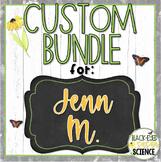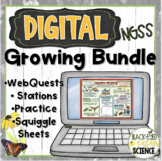Atoms DIGITAL WebQuest
- PDF
- Google Apps™
- Internet Activities
- Webquests

What educators are saying
Also included in
- This is a custom bundle but you may purchase this custom bundle for yourself or request your own by emailing blackeyedsusanscience@gmail.com.Get exactly what you want and save money doing it!How to order your customized bundle: (It’s EASY)Step #1: Choose at least 10 items.Step #2: Email the list toPrice $46.40Original Price $68.00Save $21.60
- ***SAVE 20%***With your purchase of this Growing Digital Resources Bundle, you will receive all new digital resources free of charge. If you purchase this bundle now - you will receive all of the next sets for free! As each new resource is added, the price will go up.Resources are aligned with NexPrice $120.80Original Price $151.00Save $30.20
- ***SAVE 20%***With your purchase of this Growing Digital Resources Bundle, you will receive all new digital WebQuests free of charge. If you purchase this bundle now - you will receive all of the next sets for free! As each new resource is added, the price will go up.Resources are aligned with NextPrice $72.00Original Price $90.00Save $18.00
Description
This engaging WebQuest can be completed individually, with partners, or in groups. The purpose of this WebQuest is for students to learn about atoms. They will investigate matter, the history of the atomic theory, sub atomic particles, elements, and size.
This activity guides students through exploring information and videos about the atoms. As a final task, students compare a Lego to an atom.
Answer key is included.
INTERESTED IN OTHER FULLY DIGITAL, GOOGLE APPS WEBQUESTS?
Related Products
⭐ Claim, Evidence, Reasoning Digital WebQuest
⭐ Digital WebQuests GROWING BUNDLE
⭐ Food Chains, Food Webs, and Energy Pyramids Digital WebQuest {DISTANCE LEARNING}
⭐ Seasons Digital WebQuest {DISTANCE LEARNING}
⭐ The Cycling of Earth's Materials Digital WebQuest
⭐ The Nature of Science Digital WebQuest
⭐ The Science Behind Halloween DIGITAL WebQuest
⭐ The Science of Thanksgiving DIGITAL WebQuest
Customer Tips:
Get TPT credit to use on future purchases:
- Please go to your My Purchases page (be sure you are logged in). At the top of the page you'll see a box and the message “Give feedback on recent purchases”. Simply click the “GIVE FEEDBACK” button and you will be taken to a page where you can give a quick rating and leave a comment for the product. I highly value your feedback. It helps me to make resources that meet your needs.
- Also, be the first to know about new resources, freebies, and sales - just click the green star at the top of the page next to the Black-Eyed Susan Science logo. You will then receive customized email updates about my new products.








